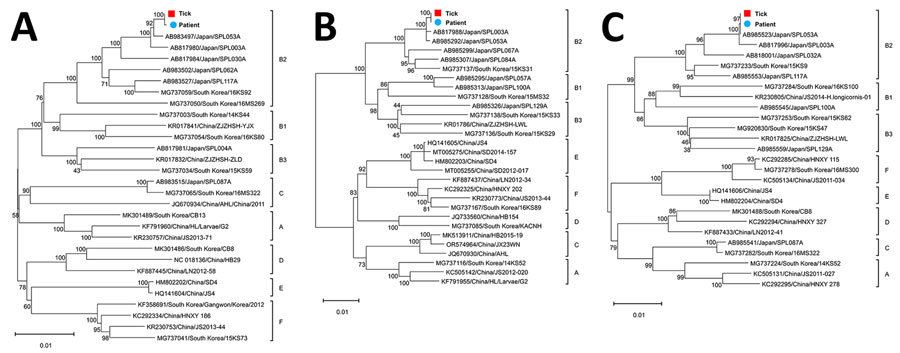Volume 30, Number 11—November 2024
Dispatch
Transmission of Severe Fever with Thrombocytopenia Syndrome Virus to Human from Nonindigenous Tick Host, Japan
Figure 2

Figure 2. Phylogenetic trees based on the coding sequence of the SFTSV segments from a human patient in Japan and a Haemaphysalis aborensis tick collected from the patient. A) Large segment; B) medium segment; C) small segment. Blue circles indicate patient-derived SFTSV strains and red squares tick-derived strains from this study. Labels at right of each tree represent SFTSV genotypes A‒F. We derived the phylogenetic trees using the maximum-likelihood method and general time-reversible model and ran 1,000 bootstrap replicates using MEGA 11.0.13 (https://www.megasoftware.net). Scale bars indicate the number of base differences per site. SFTSV, severe fever with thrombocytopenia syndrome virus.
Page created: September 24, 2024
Page updated: October 22, 2024
Page reviewed: October 22, 2024
The conclusions, findings, and opinions expressed by authors contributing to this journal do not necessarily reflect the official position of the U.S. Department of Health and Human Services, the Public Health Service, the Centers for Disease Control and Prevention, or the authors' affiliated institutions. Use of trade names is for identification only and does not imply endorsement by any of the groups named above.